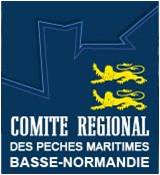Lower Normandy: sustainable fishing of wild mussels thanks to satellite data

The Lower Normandy Regional Fisheries Committee
Basse-Normandie is the third largest shellfish producer in France, with 80 000 tons of oysters and mussels per year, mussels representing over 35% of the total production. Blue mussels are cultivated on marine pilings, while an important part of the production also comes from wild mussels growing naturally in deep waters.
The Lower-Normandy Regional Committee of Marine Fishing (CRPM-BN) manages shellfish exploitation and represents the general interests of professional shellfish producers in the region.
The challenge
Shellfish yield and supply strongly vary depending on wind, water temperature and sea currents, all of which influence where spat recruit, settle, and grow along the coast. Such variations have increased recently, which makes it harder for fishermen to predict yield and manage the stock.
The traditional method for obtaining this information involves sampling on site, and is limited to mussel stock assessment. In addition to being costly and time-consuming, this method does not take into account the interaction between the species and its ecosystem.
The satellite solution
To study mussels’ beds dynamics in relation with environmental parameters and to better understand larval dispersal, Regional Committee partnered with the French Research Institute for the Exploitation of the Sea -IFREMER. Six drifting buoys were released three times, in October 2012, February 2013 and March 2013, to simulate larval drift in the Baie de Seine. They provided information on their position every ten minutes, thanks to Iridium, a global, full ocean coverage satellite communication network. This information, combined with other data, helped estimate the influence of water circulation on mussel larval dispersal.
The DILEMES project was supported, among others, by the European Fisheries Fund.
The result
The study has allowed the Regional Committee to better understand how mussels respond to environmental factors, paving the way for a more accurate management aimed at a better protection of the most important larval supply beds. The study will also help understanding the dynamics of mussel beds in the Baie de Seine, including their connectivity, and thus inform measures for ensuring sustainable exploitation. The process may also be used for the conservation and the management of other natural resources such as crustacean and other bivalves.
“The Common Fisheries Policy should be improved to ensure the long-term viability of the fisheries sector through sustainable exploitation of living aquatic resources based on sound scientific advice (…)”. Council Regulation (EC) No 2371/2002 on the conservation and sustainable exploitation of fisheries resources under the Common Fisheries Policy.

